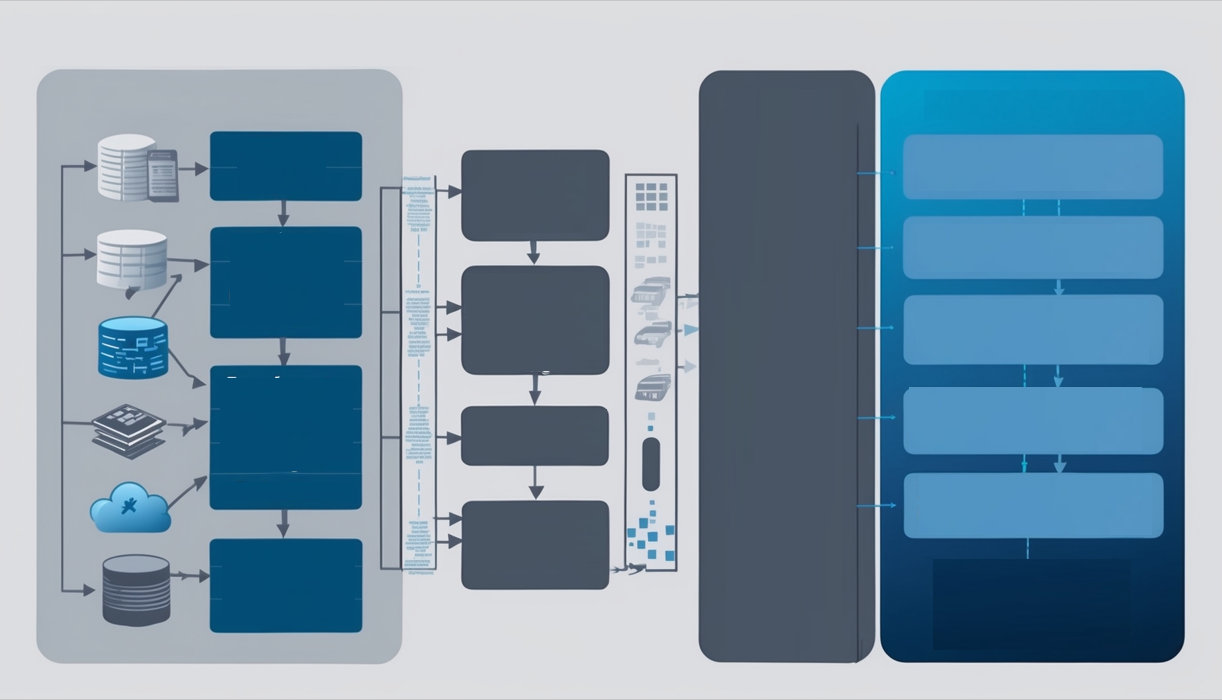Today's organizations are inundated with vast amounts of data sourced from various systems and platforms. The challenge of harnessing this data for strategic decision-making is compounded by legacy systems that operate in silos, outdated governance structures, and a lack of standardized processes. This landscape makes it difficult for organizations to efficiently compile, validate, and analyze information, thereby hindering their ability to respond to strategic objectives and external requests for information.
The core issue lies in the fragmented nature of data management systems across organizations, leading to inconsistencies in data quality, accessibility, and analysis. This fragmentation results in significant challenges, including the inability to provide timely and actionable financial and related data, discrepancies in reporting financial performance, and inefficiencies in measuring and comparing operational credibility across the system. Organizations risk falling behind in their strategic objectives and accountability without a cohesive approach to data modernization and integration.
The impact of these challenges is profound. Organizations find themselves dedicating excessive time and resources to manual data compilation and validation processes, diverting attention from strategic initiatives. The lack of integrated data management capabilities further strains organizational integrity, diminishing the trust in data-driven decision-making. Moreover, lacking a solid technical foundation for data reporting and analysis stifles innovation, limits operational flexibility, and undermines efforts to improve educational and operational outcomes.
Addressing these challenges, this guide introduces a comprehensive data modernization and integration strategy encompassing shared governance, clear roles and responsibilities, consistent standards and processes, a consolidation model for data collection, and adopting new systems and technical architecture. By establishing shared governance, organizations can ensure collective decision-making and enforcement of data processes and standards. Defining clear roles and responsibilities further clarifies accountability across the system. Developing consistent standards and processes enables comparability and reliability of system-wide data. The consolidation model minimizes disruptions by allowing organizations to continue using their existing systems while adhering to a standard coding scheme. Finally, implementing a new technical architecture provides the necessary infrastructure for effective data analysis and reporting.
Main Contents
- Establishment of Shared Governance for Collective Decision-Making
- Definition of Clear Roles and Responsibilities Across the Institution
- Development of Consistent Standards and Processes for Data Management
- Adoption of a Consolidation Model for Data Collection and Integration
- Implementation of New Systems and Technical Architecture for Enhanced Data Analysis
Key Takeaways
- Shared Governance Enhances Collective Ownership: Implementing shared governance structures ensures that decision-making and enforcement of data processes and standards are collectively owned, leading to more cohesive data management practices.
- Clarity in Roles Boosts Efficiency: By clearly defining roles and responsibilities, institutions can streamline data management operations, reduce redundancies, and boost overall efficiency.
- Standards Ensure Reliability and Comparability: The development of consistent standards and processes is crucial for ensuring the reliability and comparability of data across the institution, facilitating more accurate analysis and reporting.
- Consolidation Minimizes Disruption: Employing a consolidation model allows institutions to modernize their data systems with minimal disruption, enabling them to continue leveraging existing systems while adhering to unified data management practices.
- Technical Architecture is the Foundation of Innovation: Modern technical architecture supports the effective analysis and reporting of data and serves as a foundation for innovation, enabling institutions to adapt to evolving data needs and strategic objectives.
This guide is a comprehensive resource for CIOs and IT leaders who want to navigate the complexities of updating their institutions' data management systems. By leveraging this guide, IT professionals can address several real-world challenges and ensure their organizations' data practices are up-to-date and aligned with overarching strategic goals.
Tackle Data Fragmentation and Silos: IT leaders often grapple with the issue of data stored in silos across different departments, leading to inefficiencies and inconsistencies in data usage and reporting. This guide provides a framework for establishing shared governance and defining clear roles and responsibilities, enabling a unified approach to data management that breaks down silos and promotes cross-departmental collaboration.
Improve Data Quality and Reliability: Many organizations are concerned about accuracy, completeness, and reliability. By developing consistent standards and processes outlined in this guide, CIOs can implement systematic checks and balances to improve data quality, making it more reliable for decision-making and reporting.
Enhance Decision-Making Capabilities: IT leaders can significantly enhance their organization's decision-making capabilities by adopting the data-collection consolidation model and integrating new systems and technical architecture as recommended. This guide offers strategies for creating a robust data infrastructure that supports advanced analytics and insights, enabling leaders to make informed strategic decisions based on comprehensive and accurate data.
Navigate Digital Transformation Challenges: Digital transformation requires a modernized data architecture supporting new technologies and analytics capabilities. This guide helps CIOs develop an actionable plan for overhauling their current data management systems, ensuring they are equipped to handle the demands of digital transformation, from cloud computing to artificial intelligence and machine learning applications.
Ensure Regulatory Compliance and Data Governance: As regulatory requirements around data privacy and security become increasingly stringent, IT leaders must ensure their data management practices are compliant. This guide emphasizes the importance of shared governance and clear roles in establishing a robust data governance framework that meets compliance standards, protects sensitive information, and manages data access and usage across the organization.
By utilizing this guide to implement a data modernization and integration strategy, CIOs and IT leaders can solve critical data management challenges, paving the way for enhanced operational efficiency, better compliance, and more strategic use of data. It serves as a roadmap for transforming data management practices, ensuring they align with the organization's strategic goals and support its ongoing growth and success.

